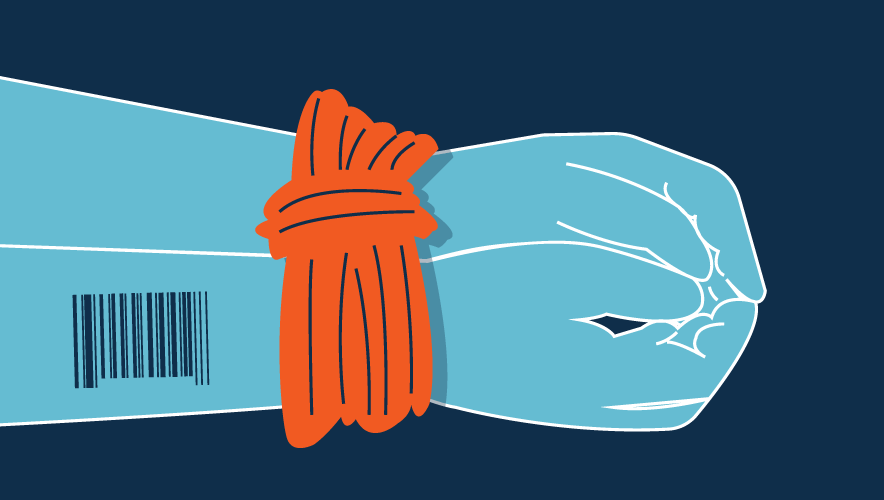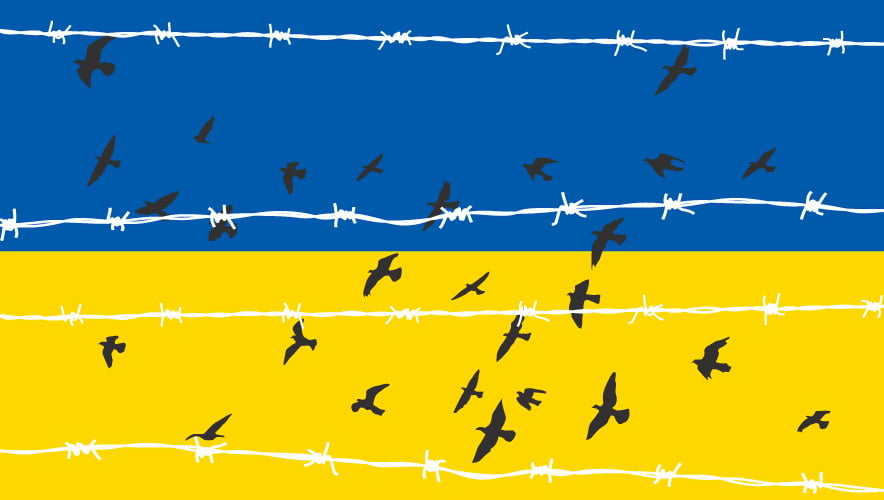How to Identify Forced Labor in Your Supply Chain
Security Management has partnered with SHRM to bring you relevant articles on key workplace topics and strategies.
Forced and exploitative labor is a rapidly metastasizing international problem, with 25 million people in situations of forced labor globally, according to International Labour Organization (ILO) estimates. The international community is attempting to root out the problem by taking an increasingly tough stance against exploitative labor in the supply chain.
Forced labor, defined by the ILO as “all work or service which is exacted from any person under the threat of a penalty and for which the person has not offered himself or herself voluntarily,” can be found in virtually every country. Among global cases, the largest share of adults who were in forced labor were domestic workers at 24 percent, followed by construction at 18 percent, manufacturing at 15 percent, and agriculture and fishing at 11 percent.
The European Union (EU) and the United States, among other jurisdictions, have tough laws in place to deter exploitative practices, but forced labor persists. A sound risk management strategy is a strong first step employers can take to help prevent exploitative practices, according to Jean-François Gerard, an attorney with and global head of practice development for Freshfields Bruckhaus Deringer in Brussels.
International Prohibitions on Forced Labor
The European Charter of Human Rights and the EU Charter of Fundamental Rights both explicitly prohibit forced labor. “EU Directive 2011/36 provides for the liability of the legal persons benefiting from forced labor,” Gerard says. He noted that the directive requires member states to impose on liable companies:
- Criminal and noncriminal fines or other sanctions such as exclusion from entitlement to public benefits or aid.
- Temporary or permanent disqualification from the practice of commercial activities.
- Placement under judicial supervision.
- Temporary or permanent closure of establishments used in committing the offense.
“The enforcement of these provisions is associated with financial and reputational damages for the employers, pushing them to take their responsibilities seriously,” Gerard says.
Several U.S. laws address exploitative labor practices, including the Tariff Act of 1930, which prohibits importing any product mined, produced, or manufactured using forced labor, and the Trafficking Victims Protection Act of 2000, which establishes human trafficking and related offenses as federal crimes and imposes civil liability on anyone benefiting from forced labor.
Further, under Federal Acquisition Regulation Subpart 22.15, federal contractors that supply certain products must certify they have made a good-faith effort to determine whether forced or indentured child labor was used to produce the items supplied.
The European Commission has put forward a proposal for an EU Supply Chain Due Diligence Directive that would include corporate due diligence obligations with regard to forced labor, notes Laura Llangozi, an attorney with Freshfields in Brussels. “This initiative was followed by a proposed draft regulation that intends to prohibit the placing on the EU market of products made with forced labor as well as their export from the EU, a potentially very far-reaching new legal regime,” Llangozi says, adding that the regulation would cover all sectors, even though textiles, mining, and agriculture are areas where forced labor is most frequently reported.
Actions Employers Can Take
Noting that some member states, including the U.K., France, the Netherlands, and Germany, have already implemented domestic forced labor due diligence laws for supply chains, Gerard suggests employers ensure they’re in compliance with their local legislation to ensure their supply chains are free of exploitative labor practices. As an example, he points to the German Supply Chain Due Diligence Act, which requires that companies perform certain basic obligations:
- Establish a risk management system and conduct a risk analysis.
- Adopt a policy statement on corporate human rights strategy.
- Anchor preventive measures in the company’s own business operations and vis-à-vis direct suppliers.
- Immediately take corrective action in the event of identified violations of the law.
- Establish a complaint procedure in the event of legal violations.
- Fulfill documentation and reporting obligations.
Additionally, employers should encourage their employees and suppliers to report such practices through the employer's internal whistleblowing channels, he adds.
“A risk management strategy can help to prevent exploitative practices,” Gerard says. Employers should communicate human rights expectations to employees and implement a code of conduct that binds employees. Training courses on high-risk areas for employees and stronger prequalification processes for suppliers are also suggested. He notes that appointing a human rights officer responsible for monitoring risk management and periodically reporting to management, as is required under the German law, is helpful to compliance efforts.
Multinationals May Not Be the Biggest Violators
Acknowledging that abusive labor practices are a huge problem around the world, Donald Dowling, an attorney with Littler in New York City who specializes in international employment law, maintains that “going after huge multinationals is not the right approach.” Multinational firms “offer the best labor practices, with some exceptions such as mining, drilling, agribusiness, and shipping,” he says. “It’s smaller local manufacturers, miners and growers within countries that are committing labor abuses and are the bigger problems."
The links in supply chains are attenuated in many cases, he says. “It’s a bit disingenuous to go after the big multinationals since in many cases they are the customer, not the manufacturer. Too much time, effort, and resources go into making improvements on the part of companies that are, in many cases, the least culpable and the most compliant. The more-culpable parties are harder to catch.”
All companies should be more proactive, examining their supply chains to make sure they're in compliance with the rules, Dowling notes. Best practices laid out by the U.S. Department of Labor, especially the implementation of a supply chain code of conduct appended to a purchase order that becomes part of the contract, are now more often expected of companies, he says.
Rosemarie Lally, J.D., is a freelance legal writer based in Washington, D.C.













